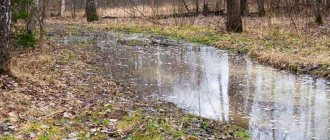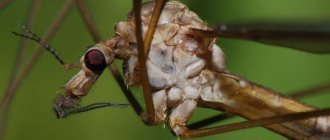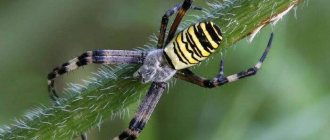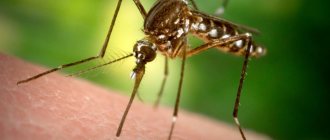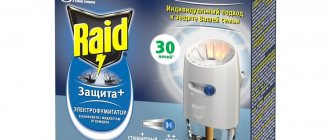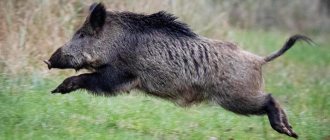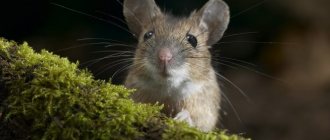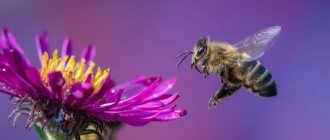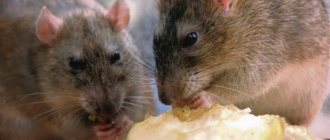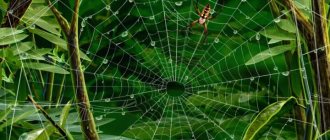The mosquito is a typical blood-sucking insect, with which residents of almost the whole world are familiar. These are one of the most ancient inhabitants of the globe. The ancestors of modern bloodsuckers, mosquitoes, began to pester living creatures 175 million years ago. The active spread of bloodsuckers was facilitated by dense thickets, abundant humidity and high ambient temperatures.
Over millions of years of evolution, pests have learned to live almost everywhere.
Colossal adaptability has allowed insects to spread throughout the planet. Many modern species of mosquitoes live throughout the Earth, with the exception of perhaps the most extreme regions such as Antarctica or arid deserts. Although there are exceptions here too. Get rid of mosquitoes in your country house
Get rid of mosquitoes in your country house
Hit from the USA. A guaranteed way to destroy all mosquitoes on the site.
skeetervac.ru
Open ›
Over the years of progressive development, bloodsuckers have developed a variety of opportunistic mechanisms. There are currently 38 genera of mosquitoes in the world, which include 3,000 species. Of these, about 600-700 are distributed in Russia, Ukraine and Belarus, Kazakhstan and in the countries of the European continent. They are extremely diverse both in appearance, feeding habits, aggressiveness, behavior, and in the degree of danger to people and animals.
Mosquito habitat
Thanks to long evolution, slow climate change, and the relative simplicity of the structure of the insect body, they take root almost everywhere without any problems. Among the existing species of bloodsuckers, there are those that prefer the damp and warm climate of the tropics and subtropics. There are species that prefer temperate latitudes. And there are those who can live anywhere.
There are quite a lot of unpretentious insects among several thousand species, at least hundreds. Scientists do not rule out that there will only be more such “station wagons”, given the significant transport flow between countries. The movement of individuals occurs with cargo, mainly food. Species that live in tropical latitudes have especially great adaptive potential.
Where mosquitoes live in the wild depends on specific conditions. They prefer dense forests, damp lowlands, and places near water bodies. The most comfortable conditions for all species are moderate or high ambient temperature, humidity, and the required amount of food.
Go to website
Mosquitoes live wherever there is sufficient food supply. In addition to comfortable nutrition, bloodsuckers require an optimal climate. Research shows that these pests do not live except in extreme regions with very low or very high temperatures. Although scientists fully admit that not all types of insects have been discovered. As knowledge accumulates, this idea may well change. Nowadays, not many frost-resistant representatives are known.
The most striking example can be considered winter mosquitoes, which are larger than their relatives and look more like centipedes. They are found in Antarctica and taiga latitudes and tolerate low temperatures well. They pose no danger to humans or animals, since they do not have a piercing proboscis. Moreover, adult representatives of the species do not feed at all.
Interesting Facts
Reproduction is impossible without saturating the females with human blood. Therefore, mosquitoes are spread over almost all areas of land where humans live. They stay close to settlements so that they can drink the blood of people at any time.
Each species has its own preferences in temperature and lighting conditions. Some people like shady ponds, others like well-lit ones. Biologists have calculated that the larvae are able to develop when the water temperature is 10–35 °C, but between 25 °C and 30 °C is considered most comfortable.
Mosquitoes rarely lay eggs in large bodies of water where many fish live, because they readily feed on eggs.
The larva will die if the water is contaminated with oil products: they form a film on the surface through which the worms cannot breathe. But some species show enviable adaptation, having adapted to use oxygen dissolved in water for breathing.
The process of how mosquitoes appear has been sufficiently studied by science. These insects are characterized by high fertility and feeding on human blood. Both of these traits are directly dependent on each other.
Reproduction of individuals in nature
The reproduction of mosquitoes in nature is associated with unusual reproductive behavior. The initiator of the reproduction process is males. Bloodsuckers are most active in late autumn and throughout almost the entire summer. The breeding cycle is minimal. If the female has access to a sufficient amount of food and blood, fertilization occurs up to several times a week. Because of such fertility, there are millions of individuals in comfortable conditions, which become a real disaster for wild animals, domestic animals and summer residents.
The female lets her know that she is ready to mate with a special squeak. In nature, in open areas, males gather in large numbers. Swarming is a kind of gathering place for all mature representatives of the species. They learn about the female’s readiness for reproduction by detecting sound stimuli with the help of their antennae.
The female, ready for reproduction, flies into the swarm, from where she emerges already fertilized. Mating occurs on the fly and takes a few seconds.
How mosquitoes reproduce in nature depends on the specific type of bloodsucker. But in general the process looks exactly like this. In closed spaces, where there are not a large number of individuals, there is no swarming. Individuals of different sexes find each other by sound.
What conditions are required for normal life?
Mosquito species vary greatly in the comfort conditions they require; some require hot and humid tropical climates, while others will thrive near the Arctic Circle.
In addition, it can be noted that some families choose a pond that is well heated by direct sunlight, while others choose a shady pond. In general, the permissible temperature for them is 1035 degrees, but the best is 2530 degrees, at which development and growth occur much faster.
Insect development
Mosquitoes are fully metamorphosed insects. This means that bloodsuckers go through 4 stages in their development.
It all starts with an egg. With enough food, the female lays 200-300 eggs at a time. During the active season this happens every few days. Due to their short reproductive period, insects reproduce very quickly and quickly colonize all surrounding areas. If the female does not receive enough blood, the nutrients that her body has accumulated are consumed. In this case, the number of eggs is significantly less, approximately 20-30 pieces.
If the air temperature exceeds 10-15 degrees, the next stage occurs after 8-10 hours. A larva emerges from the egg. She is distinguished by her gluttony. Since mosquito larvae live in water, their main diet is plant parts and small organisms.
After about 9-20 days, the larva enters the pupal stage. The process of rapid transformation into a full-fledged individual begins. After about two days, an adult mosquito or, as in biology they call a mature individual, an imago, is born.
The time it takes a mosquito to progress through each stage can vary greatly depending on the amount of food, the type, and the ambient temperature. Therefore, not every area is suitable for insects to inhabit. In addition, the density of midges in the area will also differ.
What dangers may lie in wait
According to observations, most of the larvae die, and only a few of them turn into pupae. The most common cause of death is considered to be bad weather, for example, low water temperature, natural disasters. But such a loss pays off due to the high level of fecundity of bloodsuckers, which is why their population does not decrease.
Often these small worms are eaten - the mosquito larva is the main food for inhabitants of water bodies (fish, amphibians). There is no way they can defend themselves against such an enemy. Another threat is the unfavorable environmental situation - in the presence of petroleum products, the reservoir is covered with a thin film, under which individuals cannot breathe, which is why they die after 15 minutes.
Nutritional nature
What mosquitoes eat in nature depends on the specific species. Most species require blood for normal reproductive processes. Although there are varieties that do not attack humans or other living beings. For example, the same ringing mosquitoes.
Due to the distribution of sex roles, only females feed on blood. It is necessary to produce healthy offspring. Substances contained in the blood of animals go into the development of eggs. Otherwise, the offspring takes away the mother’s strength, using the nutrients that she stores for herself. In this case, both the number of eggs in the clutch and the health of the offspring are significantly reduced. The female herself dies after laying eggs, which does not happen when she receives normal nutrition.
Females also consume other foods. In addition to blood, outside the period of active mating, females feed on nectar and liquid decay products of plants. Oddly enough, this food is considered the main one. Blood plays a key role only in the process of reproduction.
What male mosquitoes feed in nature is a more transparent question. They don't need blood at all. The main diet of males is nectar. They also consume water. Males are harmless. However, it is impossible to distinguish them by eye. Therefore, any mosquito should be considered as a potential threat.
What does it look like
To understand what a mosquito larva looks like, you can look at the photo. They occur in nature, but many do not notice them. These are small worms with a body length from 5 to 15 mm.
There are distinctive features that can be noticed upon careful examination:
- The thoracic part is expanded in relation to the abdomen;
- The abdominal region is divided into 10 segments;
- There are two black eyes on the surface of the head;
- At the end of the body there is a long process, in relation to the abdomen it is located obliquely;
- The appendage is a breathing tube, at the end of which there are two openings through which oxygen enters.
They move along the water surface with the help of swimming hairs, which are collected in bunches and attached to the body.
The large one is located on the tail segment, it acts as a kind of motor and steering wheel.
Average lifespan
How long a mosquito lives in nature depends on many factors. The main role is played by the quality of food, gender, and ambient temperature.
- Studies show that females live 10-20% longer than males. This is due to a greater reproductive role.
- Food quality. If the female receives enough blood, she lives longer. Without nourishment, the female dies immediately after laying a clutch, since reproduction becomes fatal for her body and depletes internal resources.
- Ambient temperature plays perhaps a key role. The degree of influence and preferred values depend on the specific species. If we talk about the indigenous inhabitants of the middle zone, such as the common mosquito, insects feel best in a moderately warm climate. The optimal air temperature is 10-15 degrees Celsius. In such conditions, females live about 110-115 days. Males are somewhat smaller. From 80 to 100 days. As temperatures rise, life expectancy decreases.
In the best case, life expectancy is about a year. This raises the question of life in the cold season. How mosquitoes spend the winter in nature is determined by their habitat. As a rule, in order to survive difficult weather conditions, they hide in holes or burrow into rotten leaves. After which, with the first warming, they become active again.
Also in the section: Life cycle of a mosquito
What benefits and harms do they provide?
Larvae are creatures that perform the process of filtering water in a fresh body of water. They are also fish food and have been successfully used as bait by successful fishermen. According to their presence, it is possible to determine the level of water purity, since significant pollution of the reservoir leads to the death of insects.
The only real pest is the larvae of centipedes, which choose crops as food, gnawing seedlings and roots. It is safe to say that larvae are a worthy object of study, and their usefulness to nature is understandable.
Natural enemies of mosquitoes
Oddly enough, mosquitoes have a huge number of enemies in nature. Natural enemies of mosquitoes include other predatory insects. Among them, dragonflies are of particular importance. Spiders and beetles can attack intermediate stages of midge development.
If we are talking about larvae living in water bodies, fish create problems for them. Undeveloped individuals are a favorite delicacy of river inhabitants. Fish reduce the number of mosquitoes, acting as a kind of regulator.
Another enemy is birds. There are dozens of species in nature. Moreover, birds consume huge amounts of blood-sucking insects every day, reducing the number of adult individuals.
The relationship between mosquitoes and their natural enemies is a complex and well-organized system that does not allow the population to grow to excessive levels that are dangerous for forest inhabitants.
What is the name of
Larva is the main name, but organisms also have other names. The word midge is often used in books; it is a common name.
Fishermen and ornamental fish breeders call mosquito larvae bloodworms. They use them for feeding. But they are still considered a type of larvae. They are also called bells, chironomids or longhorns.
There is another name - it is a squeak mosquito, which looks like a worm. A squad of insects is located closer to the bottom of a container or reservoir with standing water.
Bloodworms are still considered a type of larvae. Its body is bright red, this is due to the content of hemoglobin. It has good vitality and is able to survive in any natural conditions.
Lives at the bottom of a reservoir, builds a house from silt, which looks like a tube. It serves as a kind of shelter from various dangers; the bloodworm sticks out only the front part of it to search for food.
Mosquitoes that are used to feed ornamental fish are called corets. In malaria mosquitoes they are called anopheles.
